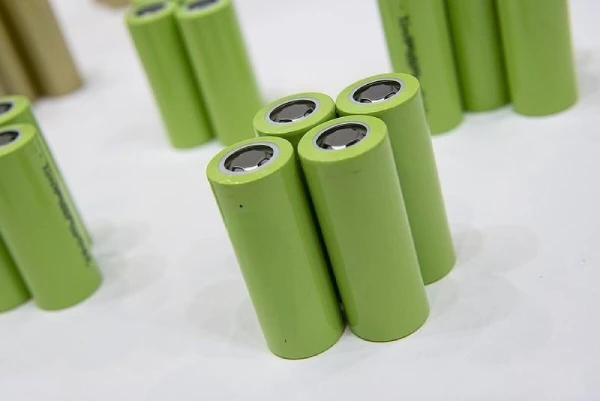As one of its core performance parameters, lithium battery voltage is directly related to the energy density, charge and discharge efficiency, and battery safety. As a professional customized lithium battery manufacturer, formulating and implementing strict lithium battery voltage standards is significant to ensuring battery quality and user safety.
Part 1. Lithium battery cell voltage
The voltage of lithium battery cells is one of the basic indicators of lithium battery performance. According to industry standards and practical experience, the voltage of the battery core should be controlled between 3.6V and 3.9V. This range ensures that the battery has sufficient energy output under normal working conditions while also avoiding safety issues caused by voltage that is too high or too low.
1. Effect of excessive voltage
Suppose the voltage of the lithium battery cell is too high. In that case, it may cause the battery to generate excessive heat during operation. It may even cause thermal runaway, battery damage, or safety accidents.
2. Effect of low voltage
Suppose the voltage of the lithium battery cell is too low. In that case, it may affect the charging and discharging efficiency of the battery and shorten the service life of the battery. In some cases, the battery may not work properly.
Part 2. Lithium battery pack voltage
Balancing the voltage of the lithium battery pack is a key step to ensure the normal and safe operation of the lithium battery pack. Voltage imbalance may lead to reduced battery performance, reduced charging and discharging efficiency, and may even cause safety issues.
Here are some common ways to balance the voltage of a lithium battery pack:
1. Balanced charging
Equalizing charging is one of the most commonly used methods. It gives the lower voltage battery an extra charge to bring its voltage in line with the other batteries.
Balanced charging can be achieved through a dedicated battery management system (BMS). BMS can detect the voltage of each lithium battery cell and control the charging current to ensure that each battery is fully charged.
2. Balanced discharge
If the voltage of the lithium battery pack is too high, the voltage can be reduced by equalizing discharge. This method balances the battery pack voltage by discharging from the higher-voltage battery.
Balanced discharge can also be achieved through BMS, which can control the discharge current to ensure that the battery pack voltage is within a safe range.
3. Single battery cell replacement
If there are poor-performing or damaged single cells in the battery pack, consider replacing these batteries. By replacing a faulty battery, the voltage balance of the battery pack can be significantly improved.
4. Voltage monitoring and management
Continuous monitoring of the voltage of each battery cell in a lithium battery pack is critical. Through the real-time monitoring function of BMS, voltage imbalance can be discovered in time, and corresponding measures can be taken to balance it.
5. Charging strategy optimization
Optimizing charging strategies is also an effective way to balance voltage. For example, the constant current-constant voltage charging method ensures that each battery can receive the appropriate amount of charging current and voltage at different stages.
6. Temperature management
Temperature has a great impact on lithium battery voltage and performance. Therefore, ensuring uniform temperature distribution of the battery pack during operation is also one of the important measures to achieve voltage balance.
7. Use professional equipment
Some professional battery equalizers or management systems can automatically perform voltage balancing operations. These devices are usually highly intelligent and automated and can effectively manage the battery pack’s voltage and charging and discharging processes.
When balancing the voltage of a lithium battery pack, multiple factors should be considered comprehensively, including battery performance, working environment, charging strategy, etc. By adopting the above method and combining it with a professional battery management system, the voltage balance of the lithium battery pack can be effectively achieved to ensure its normal operation and safety.
Part 3. Lithium battery voltage detection and monitoring
To ensure that the voltage of lithium batteries meets the standards, strict voltage detection and monitoring of batteries must be carried out during the production process. This includes testing the voltage of each single cell one by one to ensure that the voltage of each cell is within the specified range. At the same time, the overall voltage of the lithium battery pack should also be tested to ensure that the total voltage of the battery pack meets the design requirements, and voltage balancing should be performed on it.
In addition, during the production process, a complete lithium battery voltage monitoring mechanism should be established to monitor battery voltage changes in real time. Once voltage abnormalities are found, production should be stopped immediately, and the lithium batteries should be further inspected and processed to ensure that each lithium battery meets the voltage standards.
Part 4. Conclusion
To sum up, the voltage of a lithium battery is an important basis for ensuring battery performance and safety. By strictly controlling the voltage of a lithium battery cell between 3.6V and 3.9V and ensuring that the voltage of the lithium battery pack meets the design requirements and is controlled below the maximum charging voltage, the performance stability and use of the lithium battery can be effectively guaranteed. Safety.
At the same time, voltage balancing of lithium battery packs and establishing a complete voltage detection and monitoring mechanism are also important measures to ensure that lithium battery voltage meets standards.
Only lithium batteries that meet these requirements can ensure normal operation safety and stability. Lithium battery manufacturers should strictly abide by relevant standards and regulations to ensure that the lithium battery voltage meets the standards. Users should also check the battery’s voltage when using lithium batteries to ensure their safe use.
Part 5. FAQs
-
What happens if a lithium battery is overcharged?
Overcharging can lead to battery swelling, overheating, and potential safety hazards. -
Can lithium batteries be safely charged to their maximum voltage?
Lithium batteries should not be charged to their maximum voltage for safety reasons. -
How do battery management systems regulate voltage?
They monitor and control charging/discharging to keep voltage within safe limits. -
What causes a voltage drop in lithium batteries?
Voltage drop can occur due to internal resistance, temperature changes, and battery aging. -
Is it safe to use lithium batteries with mismatched voltages?
No, using mismatched battery voltages in a pack can lead to imbalances and potential safety issues. -
How does temperature affect lithium battery voltage?
High temperatures can increase voltage, while low temperatures can decrease it. -
What is the relationship between voltage and battery capacity?
Higher voltage generally indicates a higher state of charge and remaining capacity. -
Can voltage be used to estimate battery life?
Monitoring voltage changes can help estimate the remaining cycle life of a lithium battery.
Read More
Related Tags:
More Articles

GoPro Battery Charger Guide: Top Picks & Pro Charging Tips
Explore the best GoPro chargers, compare third-party options, and learn how to charge smarter for longer battery life.
GoPro Battery Life Comparison: How Long Does a GoPro Battery Last?
Find out how GoPro battery life varies by model and get practical advice to maximize runtime for every adventure.
What Battery Powers Your GoPro?
Learn all about GoPro batteries - compatibility, runtime, charging tips, and how to extend battery life for longer shoots.
What Is a Disk Battery? A Simple Guide for Non-Tech Users
A disk battery is a small, round cell used in watches, remotes, and other electronic devices. It delivers steady power for compact, low-drain devices.
What Battery Powers a Space Heater?
Discover the type of battery that powers space heaters and learn how to choose the right one for efficient heating in your home or office.




